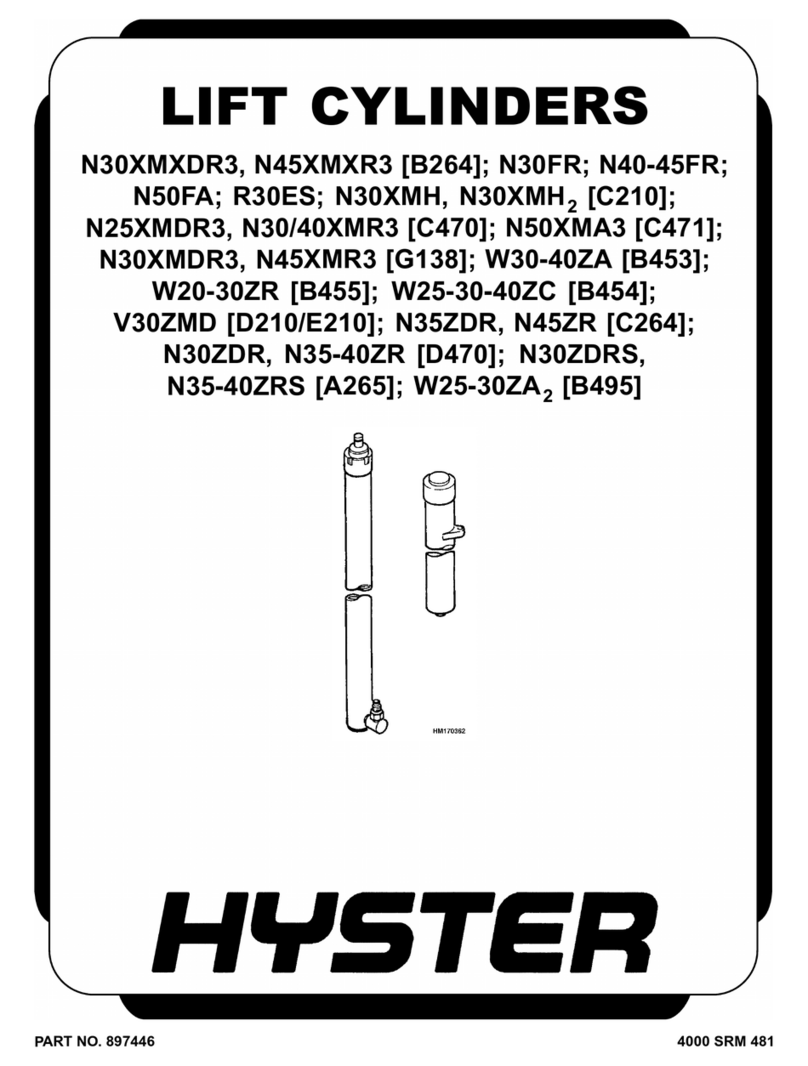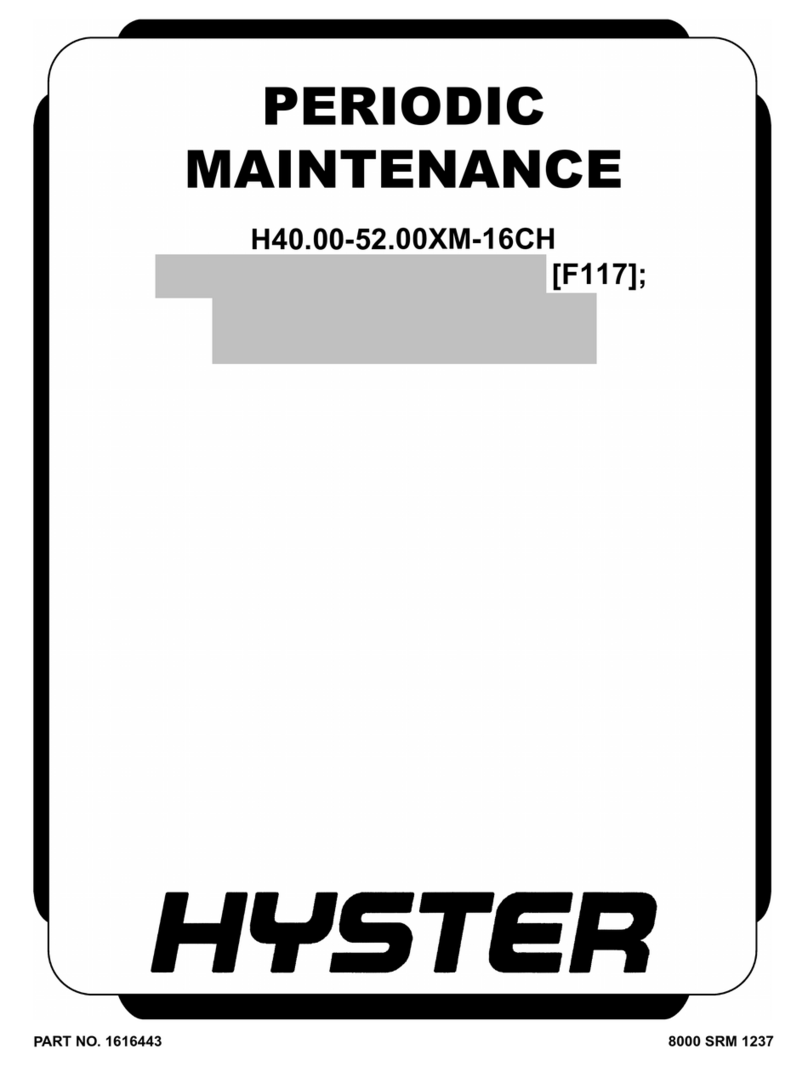
Walkie High Lift Hydraulic System Table of Contents
TABLE OF CONTENTS
General ............................................................................................................................................................... 1
Description of Operation.................................................................................................................................... 1
Hydraulic Oil ................................................................................................................................................. 2
Clean .............................................................................................................................................................. 2
Sound Level.................................................................................................................................................... 2
Special Precautions............................................................................................................................................ 2
Control Valve...................................................................................................................................................... 3
Hydraulic Reservoir........................................................................................................................................... 4
Description ..................................................................................................................................................... 4
Manual Lowering............................................................................................................................................... 4
Lift Pump and Motor Repair ............................................................................................................................. 6
General........................................................................................................................................................... 6
Remove Lift Pump and Motor Assembly...................................................................................................... 6
Disassemble ................................................................................................................................................... 11
Remove Reservoir...................................................................................................................................... 11
Remove Pump Motor................................................................................................................................. 11
Disassemble Pump .................................................................................................................................... 11
Assemble ........................................................................................................................................................ 12
Assemble Pump ......................................................................................................................................... 12
Install Pump Motor ................................................................................................................................... 12
Install Reservoir to Pump......................................................................................................................... 12
Install Lift Pump and Motor Assembly........................................................................................................ 12
Valve Repair ....................................................................................................................................................... 13
Proportional Valve (Lowering) ...................................................................................................................... 13
Remove....................................................................................................................................................... 13
Install......................................................................................................................................................... 13
Directional Valve ........................................................................................................................................... 14
Remove....................................................................................................................................................... 14
Install......................................................................................................................................................... 14
Lift Valve........................................................................................................................................................ 15
Remove....................................................................................................................................................... 15
Install......................................................................................................................................................... 15
Counterbalance Valve.................................................................................................................................... 16
W20/30ZR................................................................................................................................................... 16
Remove .................................................................................................................................................. 16
Install..................................................................................................................................................... 16
W25/30/40ZC ............................................................................................................................................. 17
Remove .................................................................................................................................................. 17
Install..................................................................................................................................................... 17
Relief Valve and Check Valve........................................................................................................................ 18
Remove....................................................................................................................................................... 18
Install......................................................................................................................................................... 18
Pilot Operated Check Valve .......................................................................................................................... 18
W20/30ZR................................................................................................................................................... 18
Remove .................................................................................................................................................. 19
Install..................................................................................................................................................... 19
Selector Valves: Reach, Tilt, and Sideshift .................................................................................................. 19
W20/30ZR and W25/30/40ZC.................................................................................................................... 19
Remove .................................................................................................................................................. 19
Install..................................................................................................................................................... 20
Relief Valve Adjustment .................................................................................................................................... 21
©2003 HYSTER COMPANY i
































